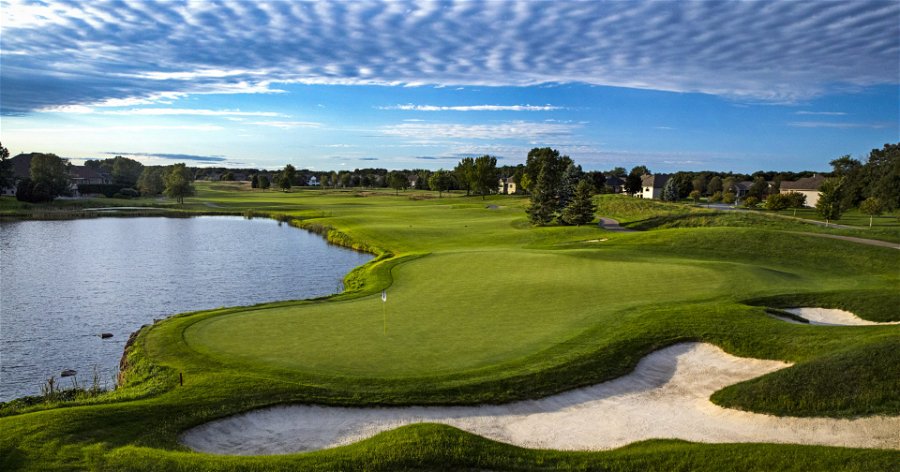The TPC Twin Cities is a golfer’s worst nightmare. There are 27 water hazards on the property, and 15 of the 18 holes involve them. 72 bunkers are visible at this week’s TOUR event anywhere there is dry land. The 14 driving holes all slant in one way or another. Golfers regularly like searching for on-course problems, and the host course for the 3M Open has no shortage of it.
Although a brief shower is predicted for Thursday night, the ground is now dry. Less than an inch of rain has fallen at TPC Twin Cities since July 1st. Mid-90s-degree temperatures are expected, and the air will be very humid. Understanding course specifics is a key component in developing any contender’s game strategy. The TPC Twin Cities is perched at a height of 1,000 feet. The ball flight for golfers will increase by 2% as a result. The 7,431 yards listed on the par-71 scorecard just got lesser. Ball flight will also be affected by the weather. The average carry distances will increase by 2% in hot and humid circumstances. Players will need to carry a small conversion chart in their yardage book to fully prepare. The following step will be to view the golf course online and evaluate the landing spots according to the weather. Amateurs enjoy appearing and letting loose. Many PGA TOUR athletes use yardage experts to assist them in understanding the layout.
The TPC Twin Cities is the ideal illustration of preparation. Professionals are aware of all the potential for a double bogey, but they use them as a framework to determine their next steps. They choose the portions of each green and the safest landing zones. Consider that Blaine is reached before any of this takes place. Putting together these course specifics starts to develop the necessary abilities. Those elements of each player’s game can be practiced on the grounds once they arrive.
Garrick Higgo, Vincent Norrman, Champ, and Ludvig Aberg are towards the top of Strokes Gained: Off-the-Tee. In the 2019 3M, Wolff fulfilled the role most exemplified by Ludvig Aberg. He is not only a great driver of the golf ball, but he also ranks in the top 10 for opportunities gained and distance to the hole.
A closer look at the course reveals a critical requirement for excellent mid- and long-iron performance. 45 percent of the approaches come from a distance of more than 175 yards. Leading the pack are Hideki Matsuyama, Gary Woodland, Chez Reavie, and Emiliano Grillo.

Gary Woodland checks each box related to ball striking. The 2019 US Open champion had an outstanding year of ball-hitting. Unfortunately, not enough of those birdie opportunities have been converted by the putter. In order for Woodland to make the playoffs, he must have a strong week as he is currently outside the top 70 on the FedExCup points list.
Tony Finau improved by over 16 strokes on the field from tee to green to win the previous year. On the other hand, he didn’t make much progress with the putter. Preparing for TPC Twin Cities would show if a successful strategy is feasible even without a hot putter.
Cameron Young had the most strokes gained from the tee to the green, off the tee, and approach at the Open Championship.
He will undoubtedly be ready with seasoned caddy Paul Tesori on his side. It would be incorrect to question Young’s focus following a major victory, given that he placed second at St. Andrews last year and then finished second at the Rocket Mortgage Classic.



